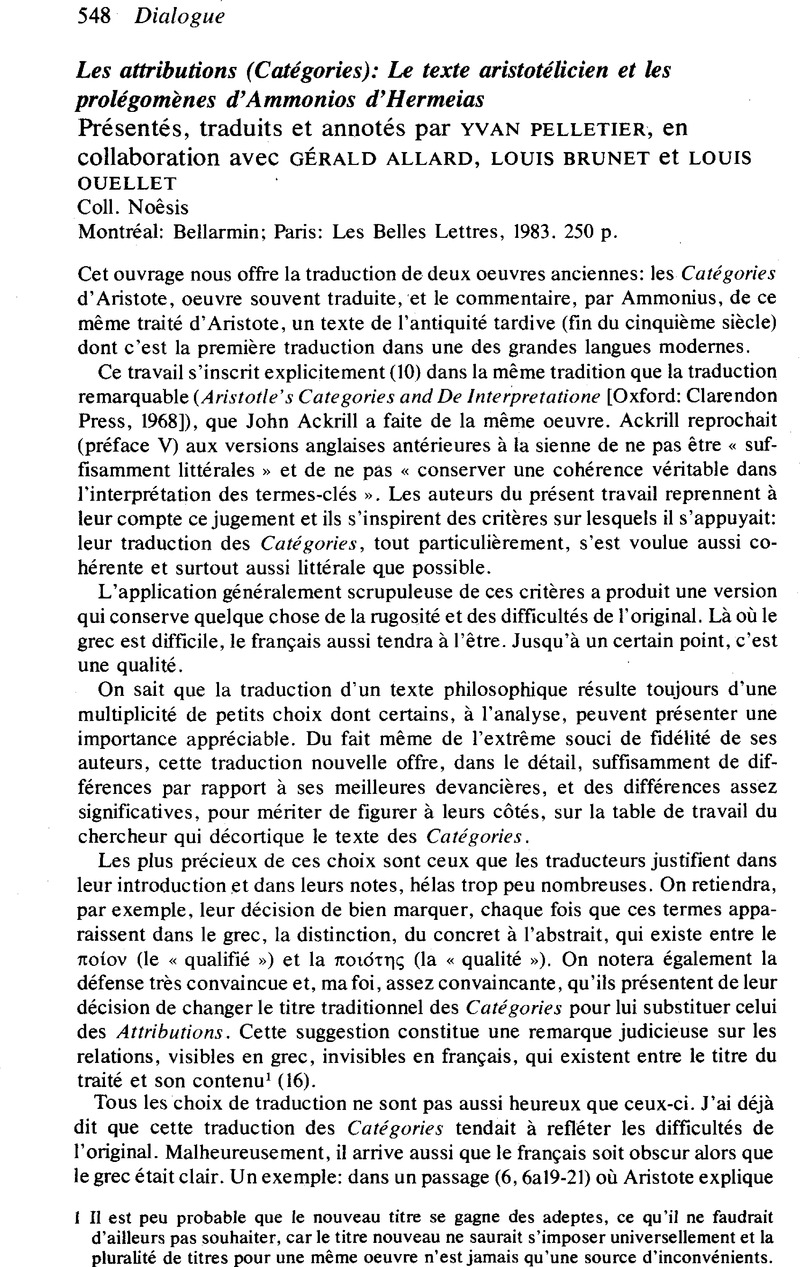No CrossRef data available.
Article contents
Les attributions (Catégories): Le texte aristotélicien et les prolégomènes d'Ammonios d'Hermeias Présentés, traduits et annotés par Yvan Pelletier, en collaboration avec Gérald Allard, Louis Brunet et Louis Ouellet Coll. Noêsis Montréal: Bellarmin; Paris: Les Belles Lettres, 1983. 250 p.
Published online by Cambridge University Press: 05 May 2010
Abstract

- Type
- Book Reviews/Comptes rendus
- Information
- Dialogue: Canadian Philosophical Review / Revue canadienne de philosophie , Volume 23 , Issue 3 , September 1984 , pp. 548 - 551
- Copyright
- Copyright © Canadian Philosophical Association 1984
References
1 II est peu probable que le nouveau titre se gagne des adeptes, ce qu'il ne faudrait d'ailleurs pas souhaiter, car le titre nouveau ne saurait s'imposer universellement et la pluralité de titres pour une même oeuvre n'est jamais qu'une source d'inconvénients.
2 Parmi ces travaux, il faut relever ceux de: Kustas, George L., «The Commentators on Aristotle's Categories and on Porphyry's Isagoge», dans Studies in Byzantine Rhetoric, Analecta Vlatadôn, vol. 17: Thessalonique (Thessaloniki: Patriarchal Institute for Patristic Studies, 1973), 101–126;Google ScholarAnton, John P., «Ancient Interpretations of Aristotle's Doctrine of Homonyma», Journal of the History of Philosophy 7/1 (01 1969), 1–18; etCrossRefGoogle ScholarKremer, Klaus, «Die Anschauung der Ammonios(Hermeiou)-Schule über den Wirklichkeitscharakter des Intelligiblen», Philosophisches Jahrbuch 69 (1961–1962),46–63.Google Scholar Ces trois auteurs insistent, tous sur la spécificité d'Ammonius et des autres commentateurs néo-platoniciens par rapport à Aristote et sur sa place dans le développement de cette tradition.
3 Les indications bibliographiques de cet article se trouvent à la note précédente.


